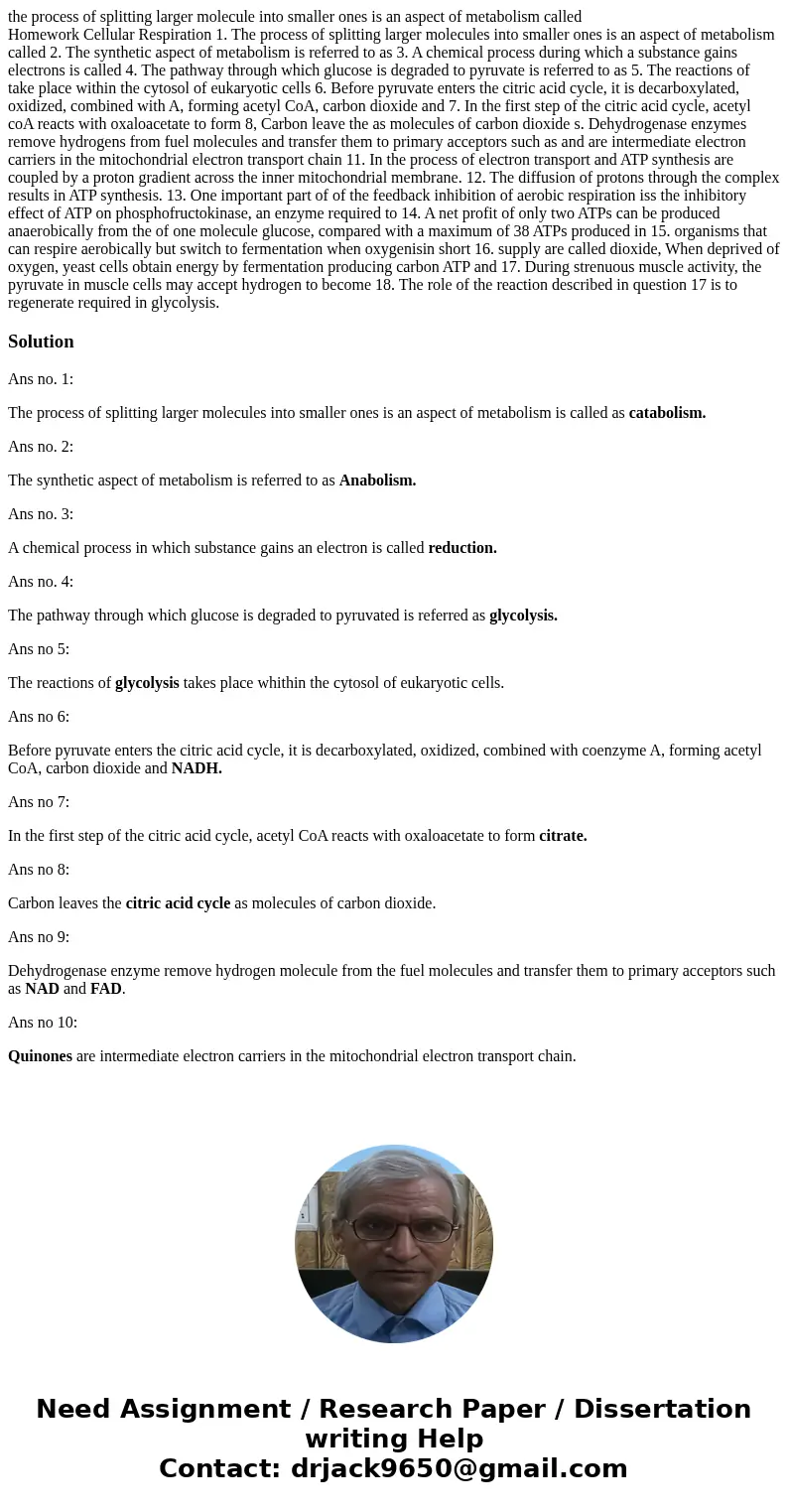the process of splitting larger molecule into smaller ones is an aspect of metabolism called
Homework Cellular Respiration 1. The process of splitting larger molecules into smaller ones is an aspect of metabolism called 2. The synthetic aspect of metabolism is referred to as 3. A chemical process during which a substance gains electrons is called 4. The pathway through which glucose is degraded to pyruvate is referred to as 5. The reactions of take place within the cytosol of eukaryotic cells 6. Before pyruvate enters the citric acid cycle, it is decarboxylated, oxidized, combined with A, forming acetyl CoA, carbon dioxide and 7. In the first step of the citric acid cycle, acetyl coA reacts with oxaloacetate to form 8, Carbon leave the as molecules of carbon dioxide s. Dehydrogenase enzymes remove hydrogens from fuel molecules and transfer them to primary acceptors such as and are intermediate electron carriers in the mitochondrial electron transport chain 11. In the process of electron transport and ATP synthesis are coupled by a proton gradient across the inner mitochondrial membrane. 12. The diffusion of protons through the complex results in ATP synthesis. 13. One important part of of the feedback inhibition of aerobic respiration iss the inhibitory effect of ATP on phosphofructokinase, an enzyme required to 14. A net profit of only two ATPs can be produced anaerobically from the of one molecule glucose, compared with a maximum of 38 ATPs produced in 15. organisms that can respire aerobically but switch to fermentation when oxygenisin short 16. supply are called dioxide, When deprived of oxygen, yeast cells obtain energy by fermentation producing carbon ATP and 17. During strenuous muscle activity, the pyruvate in muscle cells may accept hydrogen to become 18. The role of the reaction described in question 17 is to regenerate required in glycolysis.
Ans no. 1:
The process of splitting larger molecules into smaller ones is an aspect of metabolism is called as catabolism.
Ans no. 2:
The synthetic aspect of metabolism is referred to as Anabolism.
Ans no. 3:
A chemical process in which substance gains an electron is called reduction.
Ans no. 4:
The pathway through which glucose is degraded to pyruvated is referred as glycolysis.
Ans no 5:
The reactions of glycolysis takes place whithin the cytosol of eukaryotic cells.
Ans no 6:
Before pyruvate enters the citric acid cycle, it is decarboxylated, oxidized, combined with coenzyme A, forming acetyl CoA, carbon dioxide and NADH.
Ans no 7:
In the first step of the citric acid cycle, acetyl CoA reacts with oxaloacetate to form citrate.
Ans no 8:
Carbon leaves the citric acid cycle as molecules of carbon dioxide.
Ans no 9:
Dehydrogenase enzyme remove hydrogen molecule from the fuel molecules and transfer them to primary acceptors such as NAD and FAD.
Ans no 10:
Quinones are intermediate electron carriers in the mitochondrial electron transport chain.

 Homework Sourse
Homework Sourse